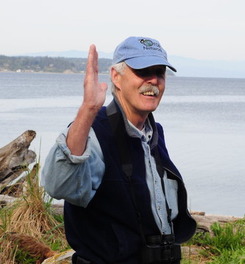 Howard (Photo: Vickie Doyle) Howard (Photo: Vickie Doyle) Howard Garrett is a 66 year-old orca researcher and activist based on Whidbey Island in Washington State, USA. Howard has been working with Southern resident orcas of the Pacific Northwest for over 30 years, beginning as a field assistant with the Center for Whale Research. Howard launched the Lolita Campaign in 1995 and the Orca Network as it is known today in 2001, which promotes conservation through education and awareness. “I am just fascinated with the natural history of orcas because it seems to be unprecedented in virtually all of wildlife biology.” – Howard Garrett ------------------------------------------------------------------------------------------------------------------- Sam: When did you first realise you wanted to work with orcas? Howard: It wasn’t really until 1980. I came over [to the San Juan Island, Washington State] in December of that year just to help my brother Ken [Balcomb, Center for Whale Research]. Ken had asked me to come over. I was in Colorado at the time and I had just gotten my degree in Sociology. I didn’t have a career path at that point, so it seemed like a good idea to come out and help. But I didn’t really know about orca or whales in general very much at that point. I had talked to Ken a little over the years. In fact, I came out in 1976 – that was my first introduction. And then in 1980 he started the Whale Museum and he needed administrative help with that because he was doing the research. So I came out really not knowing what I would be doing exactly. The timing was just so fortuitous. It was just an amazing time as I discovered when I got out here, six or seven years after Mike Bigg first started the photo-identification research in 1974 and then Ken in 1976. So the results were just coming in and they were beginning to see the outlines of the resident and transient populations. And at the same time John Ford’s work was coming in about the dialects within each pod and that each community had their own.... ‘dialect’ isn’t the word, but there isn’t a good word that is acceptable to Biology to describe that each community had its own completely separate vocabulary of calls; a whole different system for communicating, which we would call ‘language’. I was fresh from this Sociology degree and I had been studying communications and cultural transmission and these orca were doing the same thing. That just lit a spark in me that has not gone away. The fascination is endless. It is such a discovery of capabilities in non-humans that is still difficult to describe to people. Sam: Were there any other inspirations that motivated this new career path you had found? Howard: To tell the stories to the public is exciting. I started as a naturalist on board whale-watch boats, first in the San Juan Islands in 1981 and 1982. And then in 1983 I worked on a research boat in the Caribbean studying humpback whales, which then came back to its home port in Massachusetts, right at the time the whole business and industry of whale-watching was just beginning. So I got a job on a boat and was going out with 100 people twice a day telling them all about the humpback whales and whales in general. That got me into this story-telling and the interpretation angle of it. It’s so exciting when you are conveying this new information and people are realising what you are saying. It’s compelling. I find it fascinating to be able to tell people about orca. It can change a person’s view of the natural world; that’s reward right there. Sam: Is this where the idea for Orca Network came from? Howard: Yes but with a particular purpose in the very beginning, which was 1995; the Lolita Campaign. For the first year it was just all about the Lolita Campaign and that was right after Keiko [orca from the ‘Free Willy’ movie] had been rescued from Mexico and was in the process of returning to Iceland and so there was a whole lot of interest. Ken had researched how to release Keiko, this was his job for six months. He really saw that Keiko could be taken back to his home water and released, if it was done well and Ken outlined how to do that. That met a lot of opposition and he lost the job more or less. So Ken did all the research for Keiko, about how to release a captive orca and then just turned all of that effort and knowledge to Lolita. She was a far better candidate anyway because we know her family and they’re so easy to find. They were around this morning in fact, off the San Juan Islands. Sam: Can you tell us who Lolita actually is? Howard: Lolita is a Southern resident orca who was captured on August 8th in 1970 in Penn Cove, Whidbey Island. That’s about ten miles up the road from us [from the Orca Network]. Almost the whole of the Southern resident community were captured and seven of the youngest orca were sold to the captive display industry. Lolita was kept in a holding-pen in Seattle until September 24th and delivered to Miami Seaquarium from there. From the length records, it appears she was about four years-old when she was captured, give or take a year. We believe Lolita to be from L-pod because of calls that she still makes to this day. We think she is a part of the L25 matriline and daughter of L25 because she uses calls that L25 uses, but we haven’t been able to biopsy L25 to confirm this. But it appears that L25 is Lolita’s mum. And probably L25 lost all of her offspring during the captures [of wild orca for the captive display industry] because she has had none otherwise. There were other individuals present when Lolita was captured that are still alive today and it all adds up that Lolita is our better candidate for release. This is why we started the campaign. We knew we were right and that we had a good case to make for her, even though there was so much doubt out there that it could ever work. The industry just pounds everybody with this negative message that it can’t work and people don’t even know where they heard that. So then you have to straighten them out with all the new information and I love that job. That’s what we do. Sam: Why do you feel that Lolita, along with other orcas, should not be kept in captivity? Howard: It’s abusive and disrespectful to hold Lolita in a concrete tank for entertainment revenues. The only education it sends is that it’s okay to abuse and dominate magnificent mammals. It teaches people that orca are not aware, have no emotions and no memories, so it’s acceptable to treat them like lumber on a shelf. People leave marine circuses more ignorant than when they go in from absorbing the unspoken messages of captivity, or else they become outraged that she is being held captive for entertainment. It’s deprivation and brutality presented as fun. Sam: Do you remember your first experience of seeing orcas in the wild? Howard: Yes, very well because I just came up to visit Ken in 1976 in the summer when he had just begun the research. So I went out and he put me to work, I was driving the boat. It was an unusual day because part of L-pod had found a little harbour porpoise baby. We don’t know what happened to the mum but they were playing with it. They were lifting it up on their rostrums, giving it a ride in mid-air. It seemed like they were being gentle. Nobody knows what happened to it, there was no blood or anything. At one point, two L-pod whales came together side by side and gave the porpoise a ride in between them. It was amazing. Ken had never seen anything like that. It was a very memorable day. It was phenomenal, great fun but I went back to my life until 1980 when I came back out. And that’s when the research results started to come in. Sam: So what does Orca Network do right now? Howard: We try to keep people’s awareness of the whales fresh on an almost daily basis, just so they’ll know that it’s not just a once in a while occasion that whales are seen here. During a part of the year it’s almost every day. And there’s so much new news, with new births and deaths, as well as interesting associations and behaviours. This ties in with Ken’s research but also now that they are listed as endangered, there’s a lot of other research on their prey, the salmon. Now it’s been discovered that they mainly only eat the Chinook salmon and that has huge implications. So we try to keep people up-to-date with all of this new information that’s coming out. It’s very exciting. We are trying to send those messages about the whales over and over and over so that people will have it as a part of their identity and their world, that it includes these living, breathing, caring whales. These whales that are bonded for life and have these fascinating family stories and we want to keep people freshly informed about those stories as they occur. Our core service is our email; we send out whale reports every two to five days depending on the whale activity and number of reports. Over 7,000 people are on the list and they forward that email out and it goes up on our Facebook page, with a lot of incredible photos. It reaches a lot of people. We are recapitulating personal experiences to share with a very wide audience. We also give talks to individuals and groups. This goes to a lot of very interested people worldwide, but also to very key people like journalists, educators, law-makers, policy-makers, people that can really make a difference. Information can go out there and can go right into the most influential people. By 1996 and 1997, it became obvious that the [Southern resident] whales were in trouble. That was the start of the five-year decline in the population. They went from 98 to 78 between 1995 and 2000. And that’s what triggered the Endangered Species listing. It didn’t come until 2005 but the alarm bells went off. So then our mission shifted. We didn’t forget Lolita of course, we kept that but we added a big conservation message to everything that we did. The whole organisation had to restart in 2001, that’s when Orca Network itself really began. Sam: You have just initiated a new campaign called ‘Share the Water’. Tell us a little bit about that. Howard: Yes, well that came from an idea for a sign. Down the road in our little village, which is only one post office, a grocery store, a restaurant and lounge, there’s a sign on the front of the old store that somebody put up that says ‘share the road’. And there’s a graphic of a motorcycle. There’s room on the other side for a sign and I suggested to the owner that it should say ‘Share the Water’ with a photo of an orca to send that message that we share the water. It’s not our water. Our neighbours, the whales, live in the water and we should share the water. It’s sort of a core concept for what Orca Network tries to say. We should treat our neighbours with respect and we should leave the water okay for them. It’s a shorthand way of conveying a big message – it’s not just us humans here using everything as we see fit. And of course, when you protect the orca, you protect their home and everything in it. That’s a complete ecological conservation message; everything from the river systems, to the estuaries, to the bays, to the deltas and all the little critters, everything that lives there, we need to protect their home for all of it. Orca are symbolic of that whole marine ecosystem. If people begin to care about the orca and want them to do well, it follows that people will begin to take care of the whole ocean environment. Sam: The Southern resident population are the most studied population in the world. Why is that? Howard: They are easy to find and therefore easy to study. But we are beginning to learn more and more about transients as well, about where to find them and about certain individuals. And around the world; increasingly, the Northern residents, the Prince William [Alaska] residents and transients and the Antarctic, the North Atlantic around the UK, the Icelandic, are all being studied and their stories are being told. Sam: Where can the Southern residents be found? Howard: They have been seen as far south as Monterey Bay, California, since 2001, during the winter months. It’s in no doubt that it’s because that’s where the Chinook salmon are headed that time of the year to go into the Sacramento River. And they have been seen as far north as Chatham Strait in southeast Alaska, which is new information from less than a year ago. There were some L-pod whales seen up there and that’s about 700 miles north of here. And then they were seen seven days later down here off Victoria [Vancouver Island, Canada]. That really confirms that 100 miles every 24 hours is no exaggeration. And that’s a straight line – they could have curved around a lot. Sam: How difficult are they to study because they don’t spend their whole time around the San Juan Islands? Howard: It’s easy to get the basic demographic information; who’s there and who’s not there, new births and deaths and most association patterns. It is difficult because you have to have a whole operation, which Ken has had since 1976. You have to be very strict about your record keeping, your organisation of all the photos. You have to have massive storage backup for all those photos and you have to be able to refer back and get records of every sighting if you want to compile data for studies like Emma Foster’s study [on the orca menopause]. You have to be able to have access to all that information. But the subject matter is right there so it’s just not that hard. 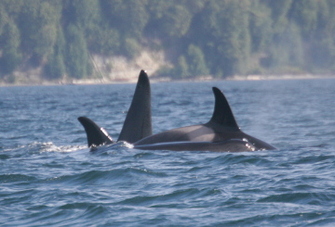 Photo: Howard Garrett Photo: Howard Garrett Sam: What do Southern resident orcas eat? Howard: Primarily Chinook salmon. And that makes perfect sense if you go back 100 years or 1,000 years or whenever the time was when they began to specialise in Chinook. They are big, fat fish, high omega-3 fatty acids and available year-round essentially. They don’t bunch up as much as the other kids of salmon do to go upstream. It’s not as specific of a time, they just sort of straggle in, in big long periods that go on for weeks and months, to each individual river. So at any given time there used to be Chinook around somewhere in their range. It made perfect sense thousands of years ago and until 100 years ago to specialise completely in Chinook. But now, with the habitat destruction and the over-harvesting et cetera, those Chinook have been reduced and now they’re in bad shape and are listed as endangered themselves. Now it’s very problematic for the orca to get enough year-round. They also eat a little bit of Chum salmon and we don’t know if that’s new. They are the second largest, the second best and the orca settle for them in September to December. Maybe that’s an adaptation. But in a lot of ways you can think of orca as very conservative in their habits, they don’t like to shift. And what was demonstrated with the five-year decline between 1995 and 2000 is that the orca will starve if they don’t get their preferred food. That included the deaths of a lot of reproductive-age adults, which is terrible in terms of population survival. But it also demonstrates that they share their food. The very old and the very young were given food by the ones who could catch the food, even if it meant they starved. It really demonstrated their bonding and their loyalty to each other. Sam: What other conservation threats are the Southern residents facing? Howard: Pollution is a factor when they are hungry and the boats are a factor when they are hungry. So really it all comes back to the Chinook. As Josh [McInnes] pointed out, the transients are far more polluted because they are eating higher on the food chain and yet they are doing much better in terms of growth, because they are getting food. Pollutants really have an effect when the orca are hungry, when they draw down their fat supplies for energy and that’s where the pollutants are lodged so it gets into their blood stream and their endocrine system and it effects their immune system right away. Then they become subject to all sorts of diseases and infections. Sam: And is it true that pollutants can also affect orca fertility and calf survival rate? Howard: In 2000, a young adult male, J18, washed up dead near Vancouver [Canada] and he was found to have zero reproductive ability, a zero sperm count. His whole reproductive system had been compromised probably from his foetal stages. From the very beginning of his formative years when all of those systems are starting to develop, they were hit by those pollutants from his mother and they compromised his immune system. We don’t know how many others out there, male and female, may be unable to reproduce. But there are several adult females that should have been having calves that have not. Sam: The waters around the San Juan Islands are a busy hotspot for whale-watching. How much is this actually affecting the Southern residents? Howard: I’m not out there on a daily basis to be able to really document that, so I just hear stories. But on some occasions it can be a big factor I think. It can really disturb them. And it’s hard to deal with because there’s a huge benefit to whale-watching as well, in terms of raising awareness and attachment to the whales; dedication to them. Our answer beyond being in support of the regulations is education and it comes back to building respect for the whales. That’s where the ‘Share the Water’ concept is so useful because we are trying to encourage people to just be courteous. Show respect – we’re in their home, tread lightly. It’s a 200 metre exclusion zone in the U.S. and it’s still 100 metres in Canadian waters. Sam: What is the ‘superpod’ – why do orcas form a superpod and are the Southern residents the only ones who do it? Howard: It is something that we have seen many times, when there are multiple pods together in the same place at the same time. What I gather, is when they have found enough food, their preference is to come together and party. As much as possible. All three Southern resident pods [J, K and L] and even individual pods or different combinations of matrilines will come together and associate close together whenever they can. They break up into smaller groups and spread out over a wider area when they need to, to find fish. Otherwise, their preference whenever possible is to come together to be a superpod. They have a different type of behavioural style when they come together. Instead of being hard to find or disappearing a lot because they are underwater searching for fish, they’re more at the surface doing a lot of rolling around, splashing, breaching and associating; very tight formations in physical contact with each other. You can feel it and you can hear it if you listen with hydrophones. The chatter rate – the rate of conversation is just incredible, it’s non-stop and multi-layered. Sam: Transient and resident orcas never mix but there have been instances of aggression displayed by the fish-eaters toward the mighty mammal killers. Why do you think this is? Howard: When the residents are in the transients move out and when the transients are in, the residents move out. The Southern residents have numbers on their side. But lately, the transients have been forming larger groups so it will be interesting to see what will happen when 25 or 30 transients meet up with 10, 20 or 30 residents and that is reversed. Sam: Do you think these larger transient groups are adaptations for something? Howard: They are adapting to an abundance of seals. Because since the Marine Mammal Protection Act of 1972, the seals have been increasing and now there are seals everywhere. Sam: What are your thoughts on the ‘excitement call’, a call type found to be produced by a number of different orca populations from around the world? Some think that it may be the orca equivalent to human laughter? Howard: Well, I’m excited by the excitement call! That’s a very interesting finding because we talk about how they don’t share any calls, that their entire communication system is separate with each community and yet here’s one that seems to be universal. Just like laughter is a universal human sound, maybe that’s what they have. And that really humanises them and personalises them. Sam: I am performing a short study: they say that pets look like their humans – so I was wondering whether researchers are like their study subject. Are you able to describe orcas and yourself in the same three words? Howard: Swift, aware and autonomous. Sam: Orcas are black/grey and white. But what I want to know is, can they see in colour? Howard: Orca have very little colour perception. They mainly see shades of light and dark, which is most valuable underwater. Sam: What are your thoughts on the Orca Aware campaign here in the UK? Howard: I think it’s great to have another source for news and education about orcas. Sam: Are there any hot topics you feel we should be focusing our attentions on? Howard: It’s interesting to monitor the shifting scientific paradigms for understanding orcas. Currently biologists are documenting and describing observable data from the field, like photo-identification, demographics, ecotypes, social associations and cooperative behaviour, prey preferences and hunting techniques, travel routes, acoustics and genetics. Meanwhile some activists are talking about the inner lives of orca, both captive and free-ranging, to help people understand that they feel emotions and loyalty toward one another, and mourn their losses, and they are acutely aware of their surroundings whether that’s a vast marine habitat or a concrete box. Unbeknownst to both, there is a well-established science that can bridge that gap and scientifically describe the inner lives of such highly evolved, cognitively aware and culturally advanced mammals, but that science has so far been applied only to humans. It’s the science of social identities, the dynamics of self-awareness and the processes of continually constructing our roles and our societies. It’s about social interactions and culture-building, and it can help us understand how cultures are transmitted constantly and passed down the generations to become traditions, but it can’t be seen as just an individual activity so it escapes the gaze of most observers. Orca are probably the most thoroughly social of mammals, and their neuroanatomy tells us they are also highly aware, so it seems only a matter of time before the science of self and society will be applied to orca cultures to help us understand the social behaviour being documented worldwide. Sam: Orca Aware is a campaign for everyone – even people who don’t know too much about orca. How would you encourage someone who has no previous interest in orcas to start learning about them? Howard: One place to start would be to read Death at SeaWorld by David Kirby. It presents a good overview of the natural history of orcas, then places that knowledge in the context of the suffering of captives. A student of orcas could also go to the Orca Network Natural History page at our website. Sam: And finally, do you have any advice for young aspiring orca researchers / conservationists out there? Howard: Learn, learn, learn, and find sources of marine mammal science information. That will lead them to the projects and scientists they can work for. Thank you for the time you have taken to speak with us Howard, it has been a real pleasure! You can visit the Orca Network website here, as well as the Facebook page and Twitter. You can also find out more about captive Southern resident orca Lolita by visiting the Save Lolita campaign.
6 Comments
|
AuthorSam Lipman Interviews |

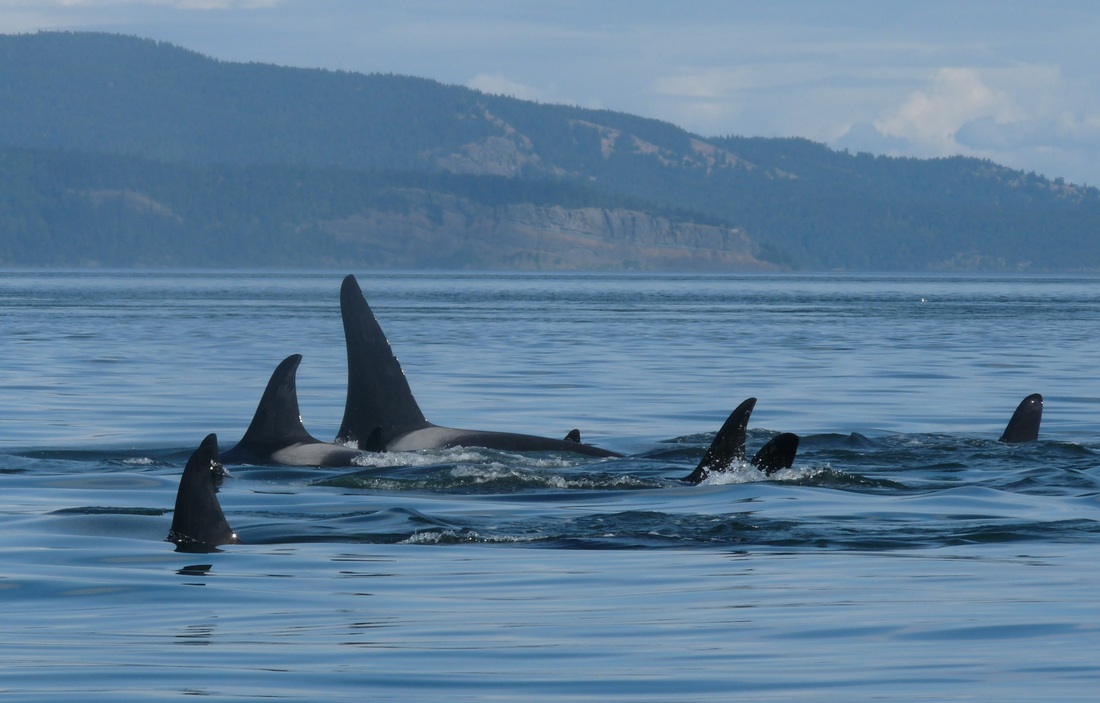
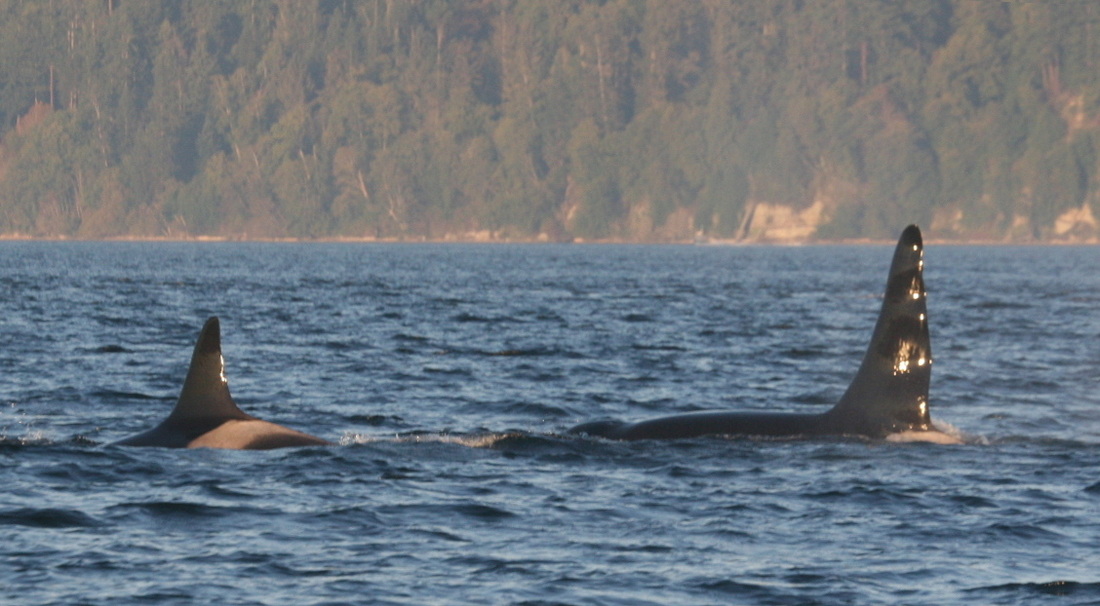
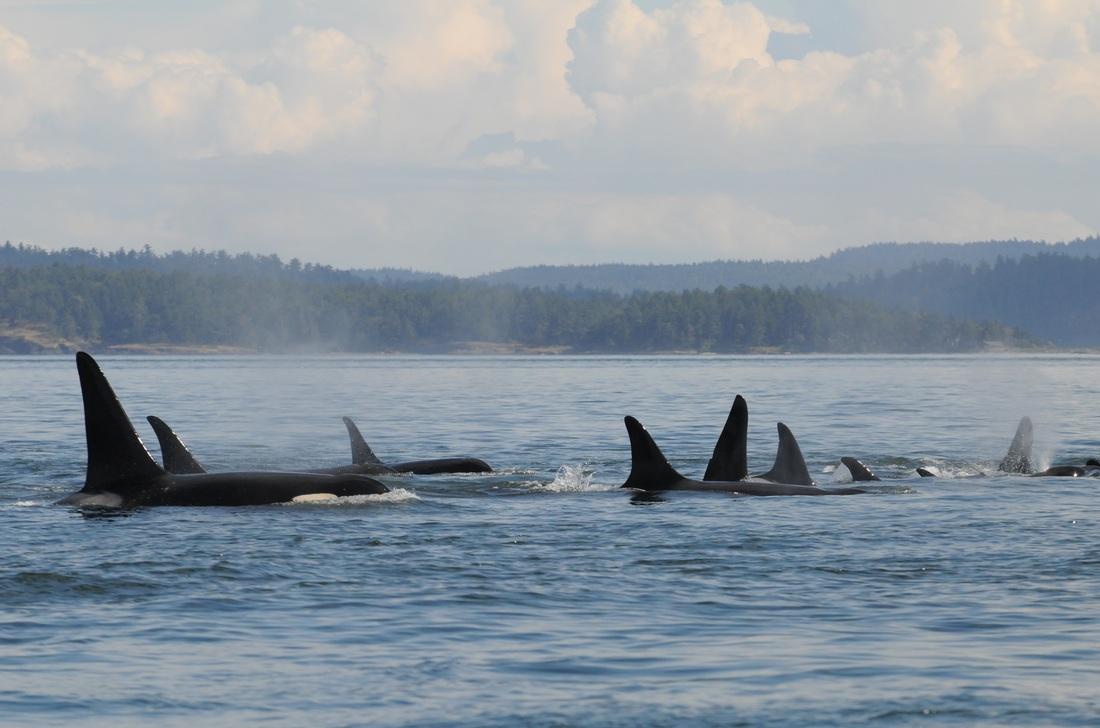
 RSS Feed
RSS Feed
